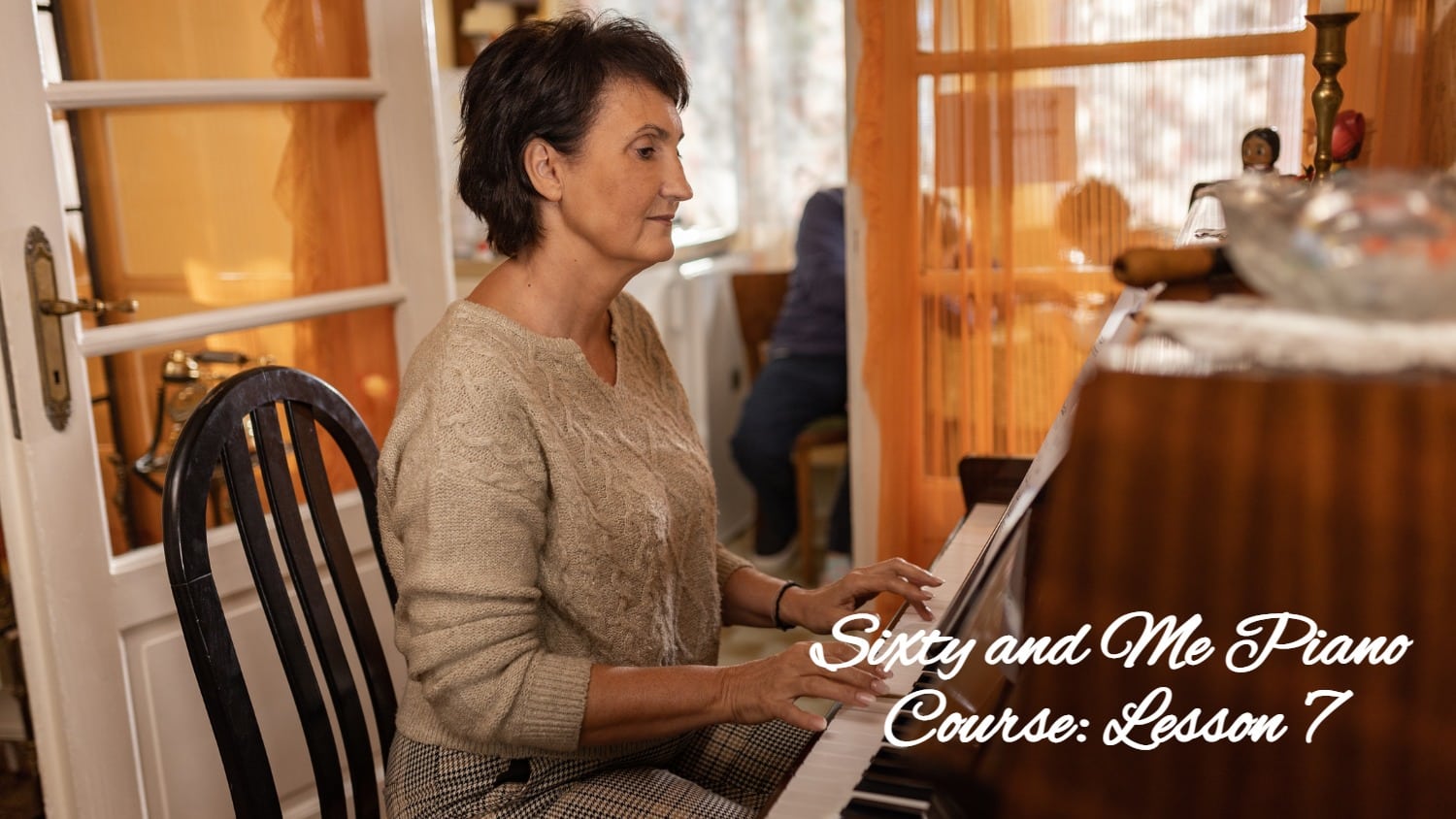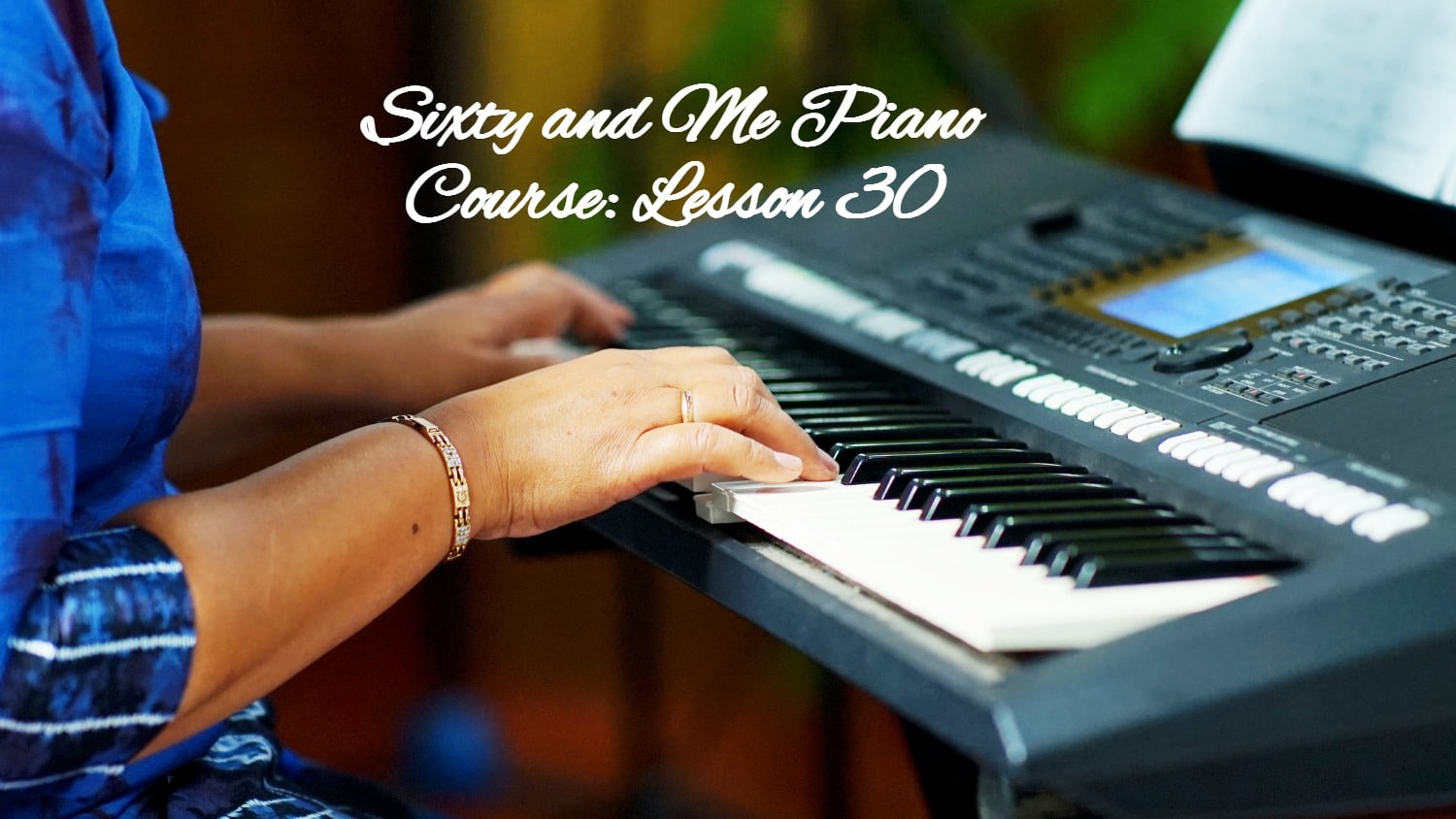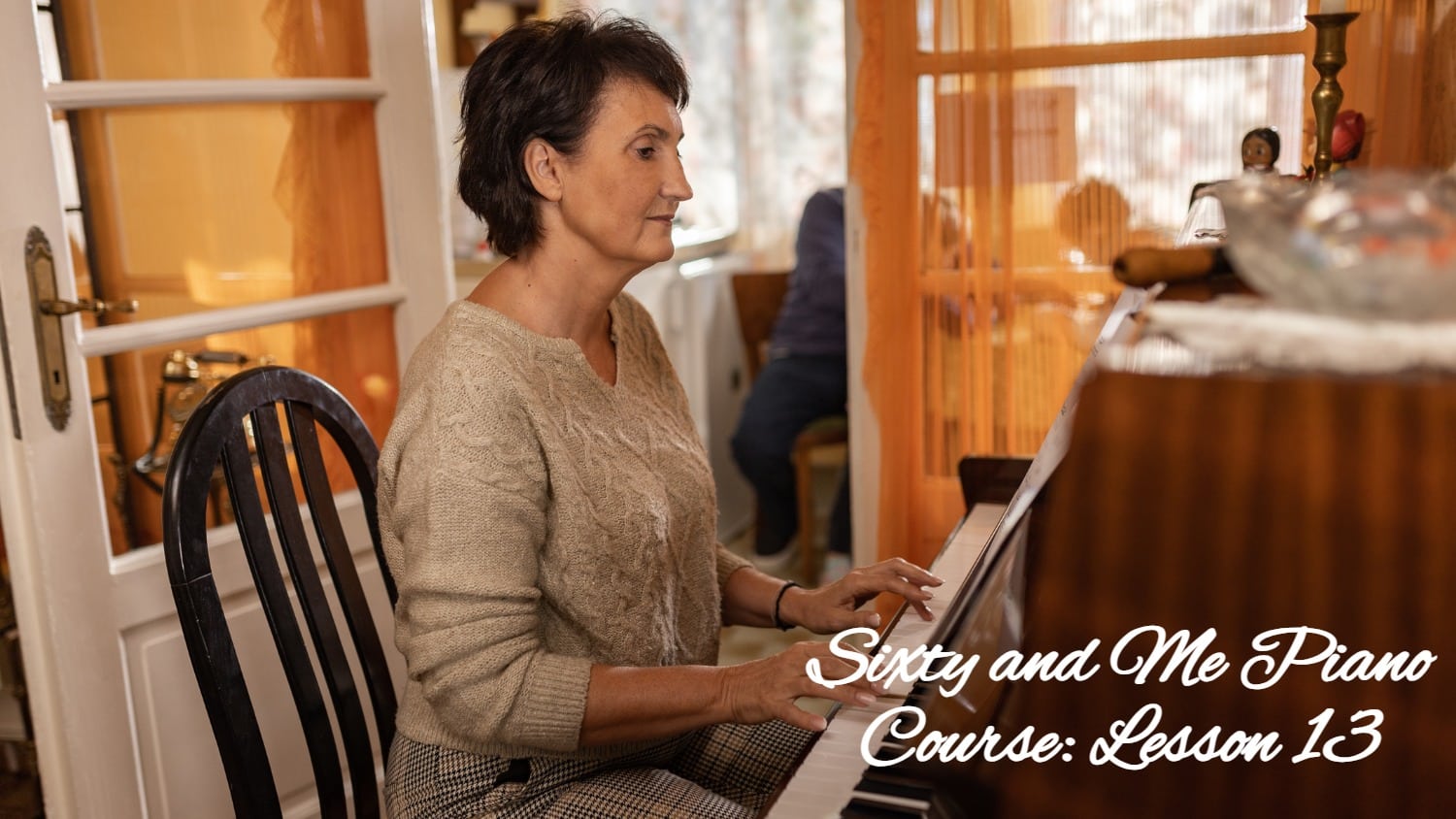
Piano Lesson 7: Steps, Skips and More Joy
[NOTE: If you are just joining us for the first time, you will find the list of my previous Sixty and Me Free Piano Lessons at the bottom of this post. You can join our lessons any time!]
Lesson 7 starts with Beethoven’s glorious Ode to Joy theme, which was inspired by a favorite poem of his time:
All the world’s creatures, Draw joy from nature’s breast Be embraced millions! The kiss for all the world!
Beethoven advised his students to work hard at learning how to play music, but also to notice the profound beauty of the music, and to connect to it emotionally. He believed that music could elevate humans to the level of gods! Here is a beautiful flash mob performance of Ode to Joy to inspire you. I think Beethoven would have loved it:
The Ode to Joy theme uses only 6 notes, but as you can see and hear, music doesn’t require a lot of notes to be melodic (hum-able) and emotional. In Lesson 2 on p.16 you played the first part of Ode to Joy. Today you will start playing the full theme on p.31-32! And next week you can start Carefree, by the German classical composer, Daniel Gottlob Turk.
7.1 Skips and Steps and Ode to Joy expanded
First, I want to talk a bit about steps and skips. In music terminology, moving from C to D is called a step, and moving from C to E is called a skip. When we STEP on the keyboard it looks like this on the staff: we move from a Line note to the neighboring Space note (up or down), or from a Space note to the neighboring Line note (up or down). When we SKIP on the keyboard, we move from Space to Space, or Line to Line on the staff, up or down.
Ode to Joy p. 31-32
Notice that in Ode to Joy p.31 in the first line, second measure, the music moves from an F to a G in the Treble Staff. That is a STEP. On p.32 first line, second measure, the music moves from E to C. That is a SKIP.
In the Bass Staff on p.31 bottom line, third measure, the music moves from G down a space to our new note Bass E. That is a SKIP. E is located in the third space from the bottom of the staff. The bass E3 and G3 that you play in Ode to Joy are just below middle C on your keyboard (see p.6). Watch my video for more about STEPS and SKIPS:
7.2 Ode to Joy Demonstration
Ready to play Ode to Joy with bass E and G? Here is my demonstration video:
7.3 D.S. al Fine
Notice that Ode to Joy has some strange new symbols written in red on pages 31-32. These symbols helped save paper and saved the poor composer’s aching hand from having to write out repeated sections.
The D.S. al Fine above the last measure of the piece on p. 32 sends you back to the sign or “segno” (in Italian) at the beginning of the third line on p.31. You continue playing from there until “Fine” above the last measure of p. 31. Fine means, the end. To clarify the D.S. al Fine, please watch my video:
At the bottom of p. 32 you see a Finger Number Drill. Try this exercise using your left hand on the C-G below middle C (that is C3). You might try playing it with a metronome set to 68 BPM (beats per minute). This exercise is meant to help you remember your finger numbers (pinkie is always 5-finger, and thumb is 1-finger in both hands).
7.4 Carefree, p.33
Carefree starts with repeated Es and moves up to F and G and sounds similar to Ode to Joy, but it includes an F# in your right hand! You will play the F# with your right hand 4-finger. Remember that a sharp (#) raises a note a HALF STEP up, to the right.
That’s all for now. I hope you enjoy playing Ode to Joy and Carefree for the next two weeks. In Lesson 8 we will add another Bass note so keep studying Bass E and G noting that E is in the third space from the bottom of the Bass Staff, and G is in the top space.
Each time you add a new note to your music, you add to the potential for richness of sound. Your music and your playing are both going to keep getting better and better! Have a great two weeks and please feel free to ask questions in the comments section below.
Passion Practice!
- Exercise #2 in E and B, and review C, G, D, and A (Appendix iii, and use the PENTASCALES chart at the back of the book if you are not sure about what the five notes in each position should be).
- Ode to Joy p.31-32 this week and next week.
- Carefree p.33 next week.
- Review this video about posture and keep checking in with your body to make sure your back is straight, shoulders are relaxed, and you are sitting far enough away from the piano so that your elbow is slightly in front of the midline of your body.
- Review pages 18, 29-30.
INTRODUCTION: https://sixtyandme.com/piano-lessons/
LESSON 2 https://sixtyandme.com/piano-lesson-number-1/
LESSON 3: https://sixtyandme.com/piano-lesson-3-health-issues-and-exercises/
LESSON 4: https://sixtyandme.com/piano-lesson-4-feel-the-beat/
LESSON 5: https://sixtyandme.com/piano-lesson-5-bass-g/
LESSON 6: https://sixtyandme.com/rests-and-pickups/
Let’s Have a Conversation!
Are you able to play songs, pieces and exercises without the letter strip now? If not, keep quizzing yourself on the keys. Did you enjoy the flash mob Ode to Joy performance? Orchestras offer surprises like that in order to try to keep classical music relevant and alive. In the Upper Hands Piano series we play both classical and popular pieces. What kind of music is your favorite? (I love it all, but I particularly like to play jazz.) Can you hum the Ode to Joy melody? Keep watching the video and playing the piece until you can!
Tags Piano Lessons







I am totally enjoying the piano lessons, one bad outcome however I lost my subscription to Sixty and me. I purchased all of the Piano lesson books. Thank you so much for your patience and beautiful lessons,God bless you.
Hello Gail,
Please reach out to editor@sixtyandme.com to sort this out. Thank you!
Vanya